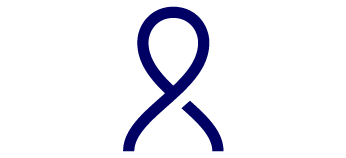Using AI in screening mammography may increase breast cancer detection rates and decrease recall and false-positive rates, according to a recent European study.
“When it comes to detecting breast cancer, we always err on the side of caution - we sometimes biopsy tissue that ends up being benign because we don’t want to overlook any suspicious areas that could be cancer,” says Sabala Mandava, M.D., a breast imager and chair of radiology at Henry Ford Health. “But this study showed AI may help with this. It found that when women were recalled for a diagnostic mammogram, breast cancer was more likely to be found.”
AI was also better able to detect early, small cancers that the human eye alone might miss. Earlier detection often means easier treatment and a better prognosis, since it catches cancer before it spreads anywhere else in the body. “If AI algorithms work as they say – and I’m sure the technology will improve over time – this will be a game changer for breast cancer treatment,” says Dr. Mandava.
The study, from the University of Copenhagen and Capital Region of Denmark, found that:
- The cancer detection rate increased from 0.70% without AI vs 0.82% with AI
- The false-positive rate decreased from 2.39% without AI to 1.63% with AI
- The positive predictive value increased from 22.6% without AI to 33.6% with AI
- The rate of small cancers found increased from 36.6% without AI vs 44.9% with AI
An improvement in accuracy could especially be helpful for women who have dense breast tissue, since dense tissue more easily camouflages cancer on a mammogram. In recent history, 3D mammograms have been better at detecting these cancers. But AI, in combination with a 3D mammogram, could make detection even better. “As we get more data over the next few years, we’ll see if this proves to be true,” says Dr. Mandava.

Schedule A Mammogram
Why AI Can’t Replace Humans – Yet
The study noted that AI decreased radiologists’ workload – but this likely won’t be the case in the United States. “In Europe, two radiologists review each mammogram, but in the United States, only one radiologist reviews each mammogram,” says Dr. Mandava. “So in Europe, AI is basically freeing up 50% of radiologists’ time. Here, we won’t see much of a change in reducing workload, since it won’t replace a radiologist. At least not anytime soon.”
She explains that the technology isn’t advanced enough. The study didn’t use AI in diagnostic mammograms, which is the type of mammogram someone gets after a suspicious area has been found on their screening mammogram, or if they have symptoms of breast cancer, like a lump, nipple discharge or pain in their breast. The study only used AI in screening mammograms, which are the mammograms every woman should get yearly starting at age 40, or earlier if they are at high risk of breast cancer.
“AI isn’t able to interpret diagnostic mammograms, as there are clinical symptoms and criteria a radiologist must consider before making a diagnosis,” says Dr. Mandava. “AI can’t synthesize all of that information. Could it in the future? Possibly. But we’re not there yet.”
Reviewed by Sabala Mandava, M.D., a breast imager and chair of radiology at Henry Ford Health.



